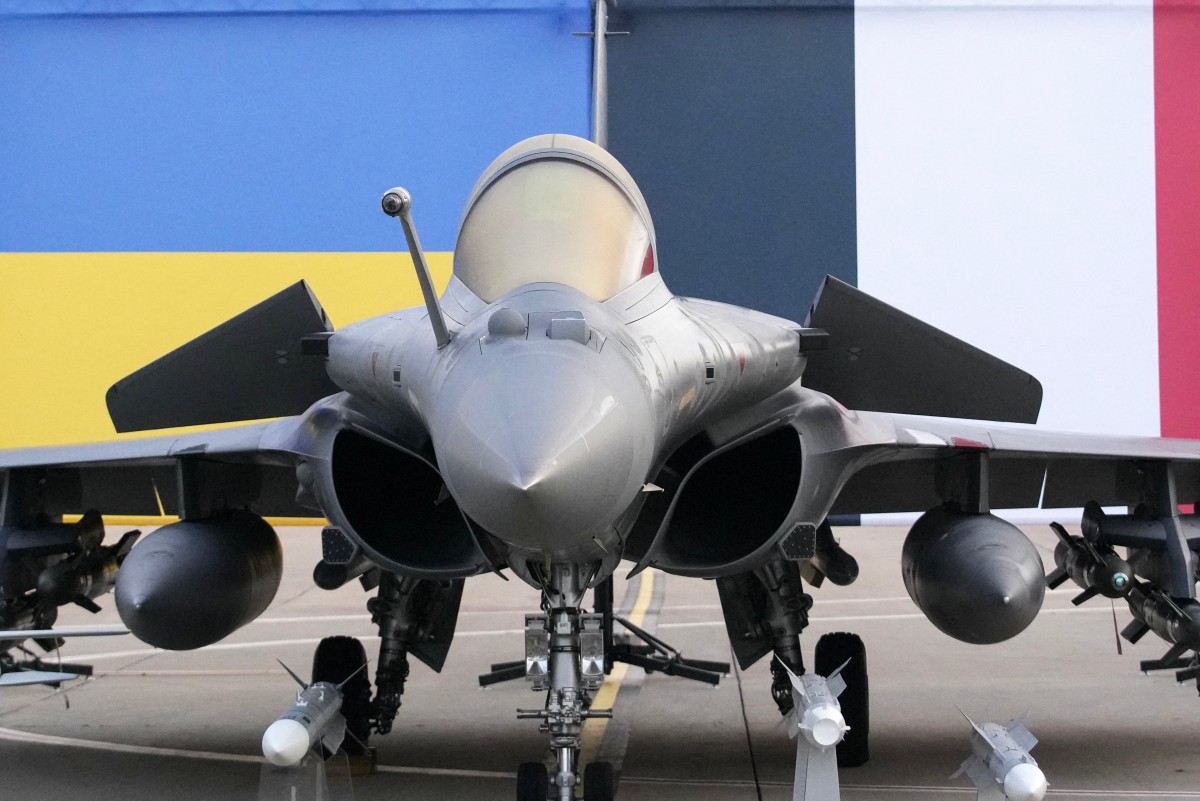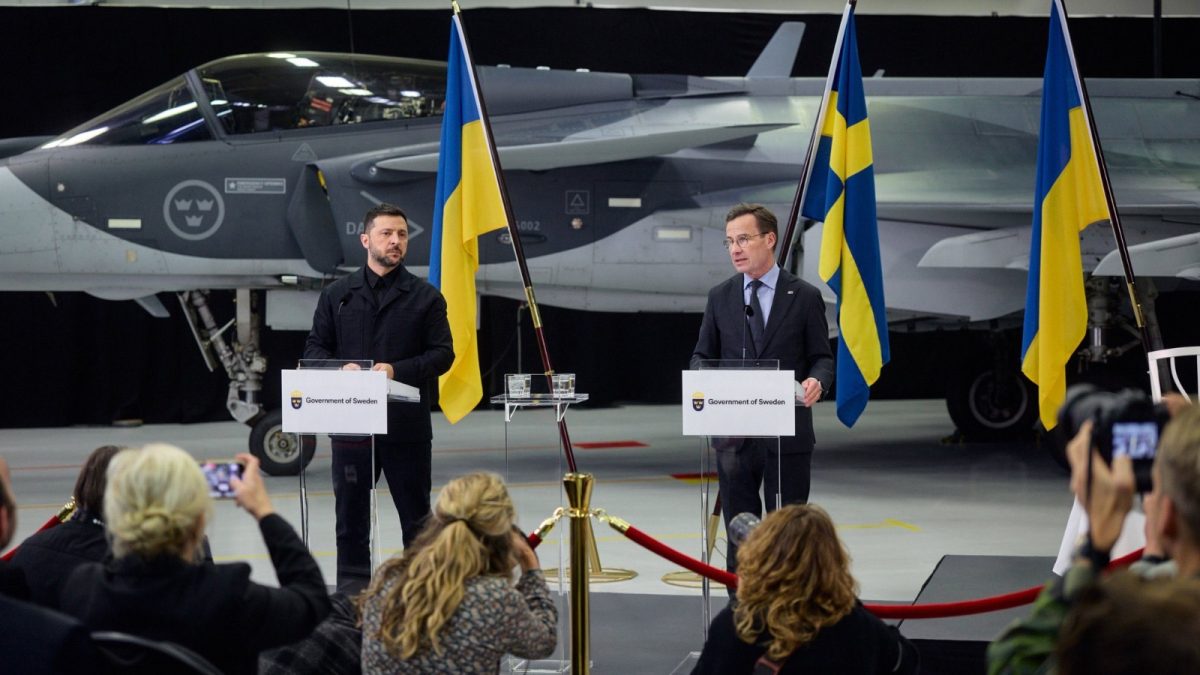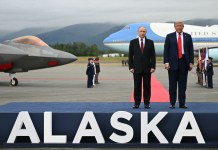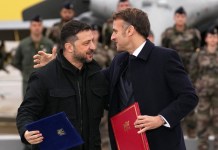Ukraine is on a fighter jet buying spree. In the past 30 days, Kyiv has signed two Letters of Intent (LoIs) to purchase 250 modern warplanes.
Last month, as EurAsian Times reported, Ukrainian President Volodymyr Zelenskyy signed an LoI with Sweden for buying as many as 150 Saab Gripen-E fighter jets.
If the LoI materialises, Ukraine will become the largest operator of the Gripen E fleet, flying more than double the number of Gripen E/F jets than even Sweden, the country that manufactures them.
On top of that, Zelenskyy signed another LoI with French President Emmanuel Macron on November 17, paving the way for the purchase of the SAMP/T next-generation air defense system and up to 100 Rafale jet fighters.
Again, if the LoI materialises, Ukraine will become the largest foreign operator of the Rafale fighter jets, putting it ahead of the UAE, which signed an agreement to purchase 80 Rafale F4 variants in December 2021, valued at around €16 billion (approximately US$19 billion).

This unprecedented pace of signing LoIs for the purchase of 250 latest 4.5th-generation fighter jets within 30 days has experts questioning: how many of these LoIs will convert into actual agreements?
Letter Of Intent Is Not A Final Purchase Agreement
For all the good press and big headlines these massive numbers generate, the fact remains that, at this stage, they are simply LoIs with no binding commitments on either side.
The letter of intent signifies only a political commitment, not a finalized purchase or sales agreement, with both sides retaining the freedom to walk away at any time or over any issue.
There is an old proverb that goes: “The devil is in the details.” In fact, it is precisely for this reason that signing an LoI is much easier than working out the minute details of the agreement.
For instance, the current LoI between Ukraine and France broadly mentions France’s commitment to supply Ukraine with 100 Rafale fighter jets over a period of ten years.
Beyond this, the LoI is silent on crucial aspects, such as the deal price, delivery timeframe, financing, and whether Ukraine will purchase the jets from its own funds or from funds provided by the European Solidarity Program.
The LoI is also silent on whether the deal includes a weapons package and fighter pilots training as well, whether it involves any Transfer of Technology (ToT), what are the offset terms and conditions under which a fighter jet supplier country has to source a certain amount of aircraft parts from the purchasing country, and how many jets will be bought in fly away conditions and how many will be constructed afresh and in which country.
It is when countries start ironing out these minute details that conflicts arise over multiple issues, often leading one or the other country to abandon the agreement altogether.
In fact, recent history is full of instances in which LoIs were signed, but the intent never materialised into actual agreements.

A Brief History Of LoIs That Did Not Materialise
India-MMRCA Rafale Deal: In 2012, following a decade-long competition for the Medium Multi-Role Combat Aircraft (MMRCA), India selected France’s Dassault Rafale as the winner to supply 126 multi-role fighter jets to the Indian Air Force (IAF).
This included 18 jets in flyaway condition and 108 to be manufactured in India by Hindustan Aeronautics Limited (HAL) with significant technology transfer and offsets.
A Letter of Intent (LOI) was issued to Dassault Aviation, initiating exclusive negotiations for the final contract. Negotiations dragged on for over 3 years due to disputes over pricing, industrial offsets (Dassault refused to assume liability for HAL’s production performance), and guarantees for weapon integration.
In 2014, India’s government changed, and there were serious corruption allegations on the defense deals concluded by the outgoing government.
In 2015, after years of back-and-forth, India’s Prime Minister Narendera Modi junked the previous agreement and announced a new, revised government-to-government deal for the supply of 36 Rafale fighter jets in fly-away condition.
Thus, while the LoI was signed for 126 Rafale fighter jets, the final agreement was only for 36 aircraft.
World’s 1st Jet-To-Jet Victory! How U.S. Navy Panther Shot Down Soviet-Russia’s MiG-15, 75 Years Ago
Switzerland-SAAB Gripen Deal: In 2011, the Federal Council of Switzerland selected Sweden’s Saab Gripen NG (later E/F variant) to replace its F-5 Tiger II fleet with 22 new multi-role jets.
Switzerland chose the SAAB Gripen over competitors like the Rafale, Eurofighter Typhoon, F-35, and F/A-18E/F Super Hornet due to its cost-effectiveness and SAAB’s substantial offset commitments of up to 60%.
A framework agreement akin to an LOI was advanced in 2012, and trials commenced. SAAB even pledged joint production and transfer of technology. However, the procurement was halted in May 2014 when a national referendum rejected it.
No final contract was signed, and SAAB withdrew its upgraded Gripen E bid in 2019.
Finally, in 2022, Switzerland signed an agreement for purchasing 35 F-35A fighter jets.
Thus, while the initial LoI was signed for SAAB Gripen, Switzerland finally ordered F-35A fighter jets.
Brazil-Rafale Deal: In 2009, France and Brazil signed a strategic partnership agreement that included a commitment for Brazil to acquire 36 Dassault Rafale multi-role fighter jets.
Just like the 2012 India MMRCA Rafale deal, the LoI between Brazil and Dassault included local production in Brazil and technology transfer.
However, negotiations stalled over several years due to escalating costs, disputes on offsets, and industrial participation.
Finally, in 2013, Brazil signed an agreement with SAAB to purchase 36 Gripen E/F jets, with an option to buy 72 more, becoming the first foreign customer of the Gripen E/F.
Thus, once again, while the LoI was signed with Rafale, the final agreement was with SAAB.
These examples show that very often there is no correlation between the company with which the LoI is signed and the company with whom the final agreement is signed.
These instances also show that negotiations can derail over any point, such as technology transfer terms, industrial offset commitments, joint production, price escalation, corruption allegations, changes in government, or national referendums.
In fact, signing an LoI is only the first step; the complex negotiations begin only after it is signed.
Many Complications In Ukraine’s LoIs With Sweden & France
There can be many complications in Ukraine’s negotiations with Sweden and France.
Firstly, a lot will depend on how the Ukraine-Russia war proceeds. Moscow has maintained that any final ceasefire deal with Kyiv will include a limit on Ukraine’s militarization.
While Kyiv is fiercely resisting Russia’s right to dictate the level of Ukraine’s militarization, the possibility can not be rejected outright.
A limit on Ukraine’s militarization will also keep a tab on Ukraine’s Air Power and thus, it can impact the final number of jets Ukraine agrees to buy.

Secondly, these are substantial orders: 150 jets from SAAB and 100 aircraft from Dassault. In general, with such large orders, clients demand technology transfer and joint production.
While this should not be an issue for SAAB, France’s Dassault is extremely protective of its technology and does not like sharing it.
It is worth recalling that Dassault’s negotiations with India for the supply of 126 Rafale jets were derailed precisely over the issues of technology transfer and joint production.
And finally, the biggest joker in the pack is the issue of financing. There is no clarity on who will finance these big aircraft purchases. There are reports that funds may come from the European Solidarity Program or from Russia’s over USD 300 billion in assets seized by Western countries.
Using Russian funds is fraught with legal complications and may not be feasible. Additionally, while at this stage Europe seems committed to financing Ukraine’s defense and military build-up, this commitment can falter in the future.
Changes in governments in countries like France and Germany can change priorities. For instance, in the US, while the Biden administration was willing to bankroll Ukraine’s defense modernization, the Trump administration had made it clear that Europe would have to take the burden of Europe’s (and Ukraine’s) defense.
These are just some of the complications that can arise in Ukraine’s plan to buy 150 SAAB Gripen-E and 100 Dassault Rafale fighter jets.
Thus, one should not be swayed by Ukraine’s big announcements to buy massive fighter jet fleets at this stage.
- Sumit Ahlawat has over a decade of experience in news media. He has worked with Press Trust of India, Times Now, Zee News, Economic Times, and Microsoft News. He holds a Master’s Degree in International Media and Modern History from the University of Sheffield, UK.
- THIS IS AN OPINION ARTICLE. VIEWS PERSONAL OF THE AUTHOR.
- He can be reached at ahlawat.sumit85 (at) gmail.com




